
Ben Altman
The More That Is Taken Away These sequenced photographs show the excavation of a single area, about 60' by 10' (19m x 3m). The work takes place in a disused field at the rear of my home in upstate New York. I am drawn to the violent turning-points of modern...
The More That Is Taken Away
These sequenced photographs show the excavation of a single area, about 60' by 10' (19m x 3m). The work takes place in a disused field at the rear of my home in upstate New York.
I am drawn to the violent turning-points of modern history, not only as human tragedies but as integral to our present time. The More That Is Taken Away is a multi-year meditation on genocide, in three Acts.
For Act I, I cleared the area and marked the 60’ x 10’ outline. Within this rectangle I cut and formed trenches, ramps, and steps, using hand tools. I worked unaided in all kinds of weather. The shapes evolved by subtraction, becoming a kind of memorial sculpture. Next I removed the internal forms, leaving a mass-grave-like pit almost 5’ deep and visible on Google Earth. I built a watchtower from salvaged lumber and also lost weight to the minimum recommended for my height. During the subsequent two years I repaired winter damage and worked on shaping. I photograph the stages, changes, and decay of the site with an 8x10 camera. The actions are recorded on video.
To begin the second Act I shaved off my long hair, then photographed myself repeatedly in the pit. I added video of arriving and undressing, repeated many times.
In the third Act I will bury prints of the self-portraits and landscape the site.
This “earthwork" series of photographs and the "performance" series (not shown) each stand by themselves. They will also be part of a large installation, with the photographs and the whole video record - in long loops on maybe 30 displays with soundtracks forming an aural texture - and perhaps hand-made books.
Although only collateral members of my father's family died in the Holocaust, for me histories of atrocity underlie our contemporary world. In this and other work I question the present by responding to our intractable past. Rather than an immobilized gesture and the moral certitude common with memorials, the project encourages an open engagement.
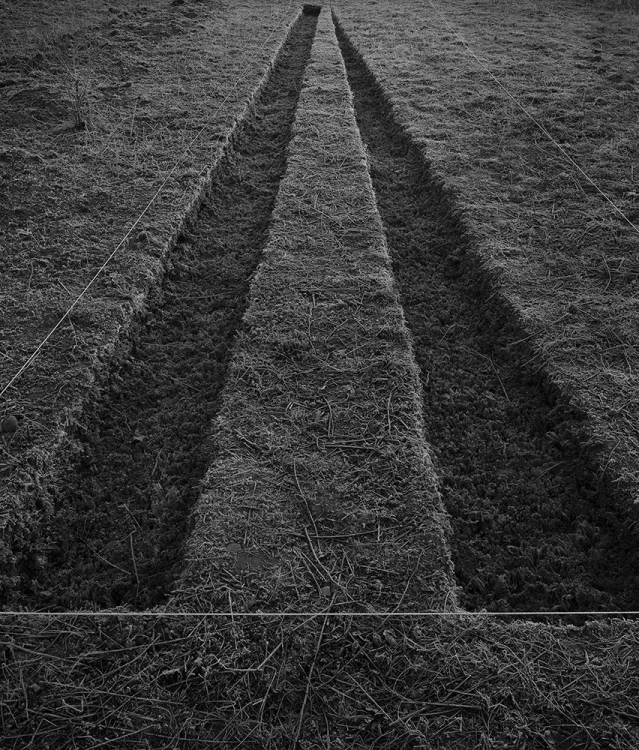
Act I, Year One, November
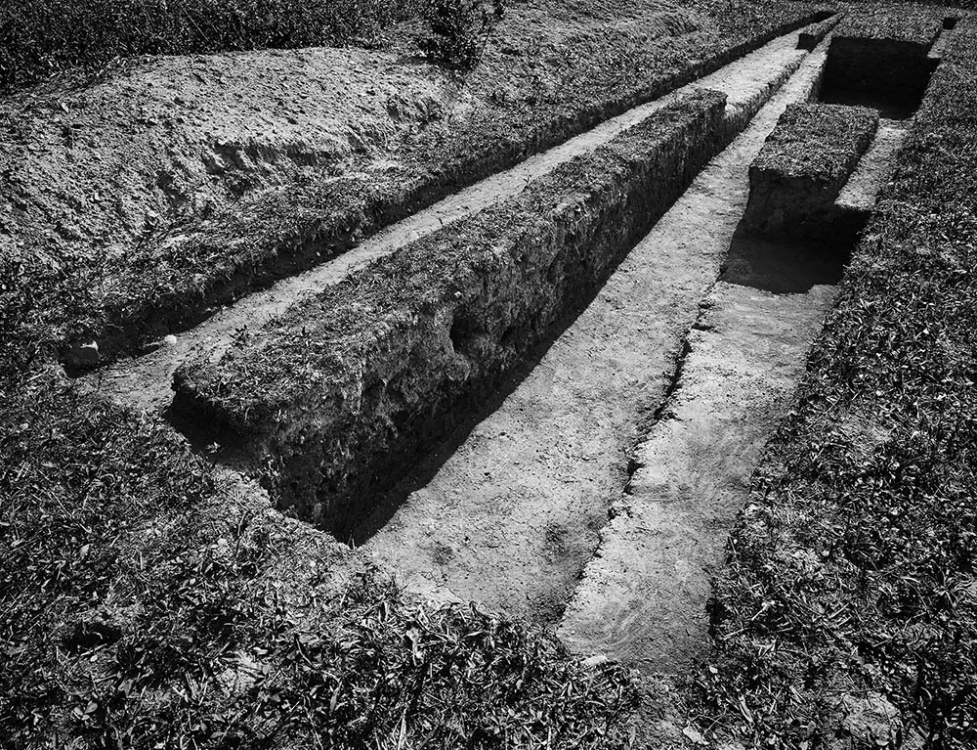
Act I, Year Two, June
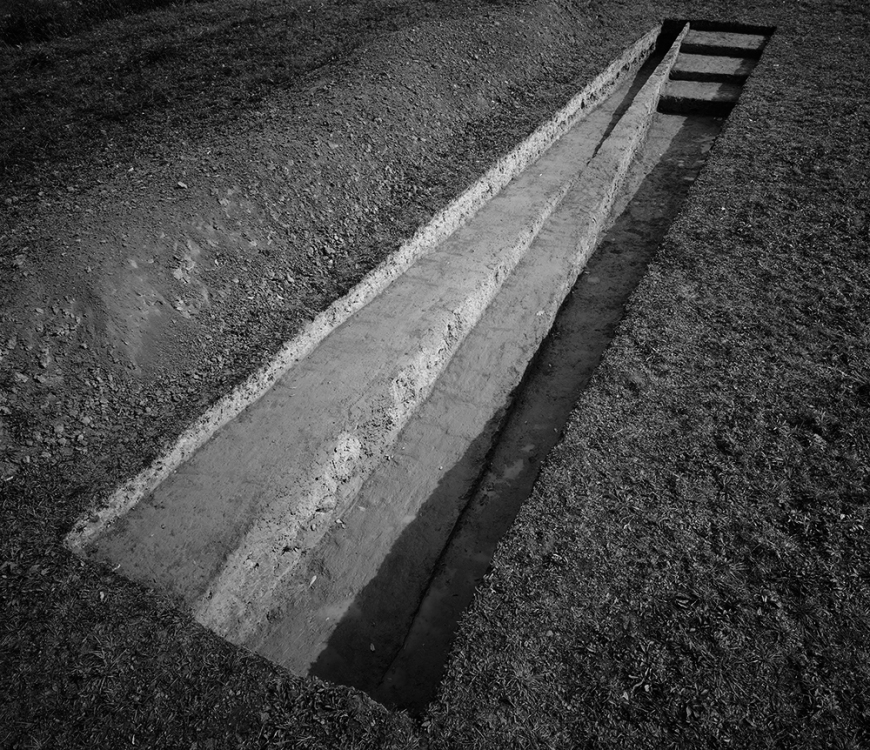
Act 1, Year Two, September
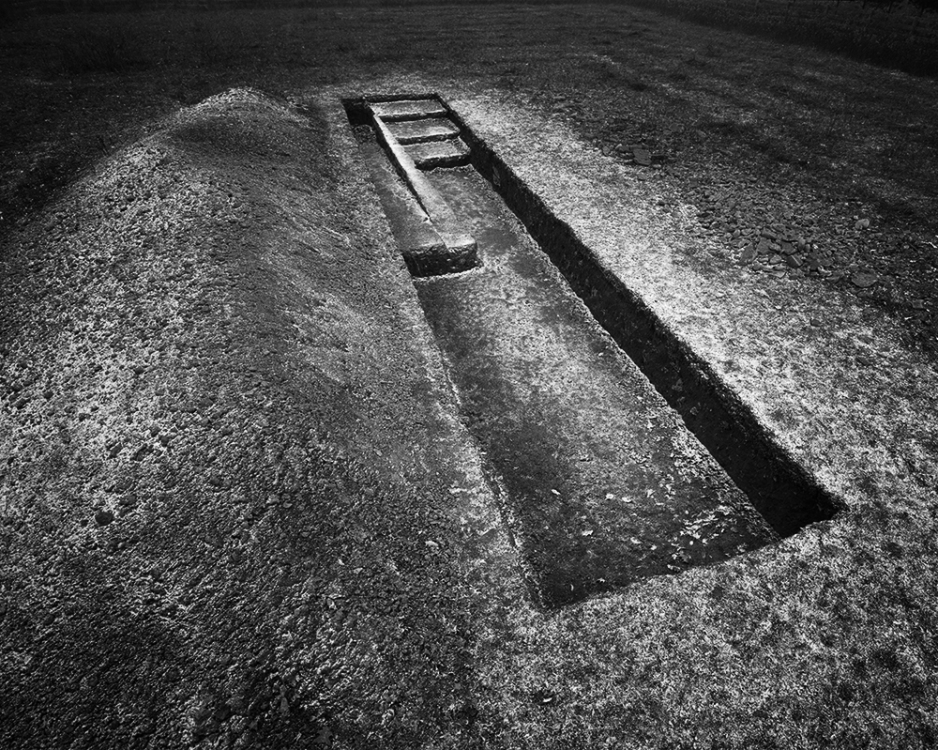
Act 1, Year Two, November
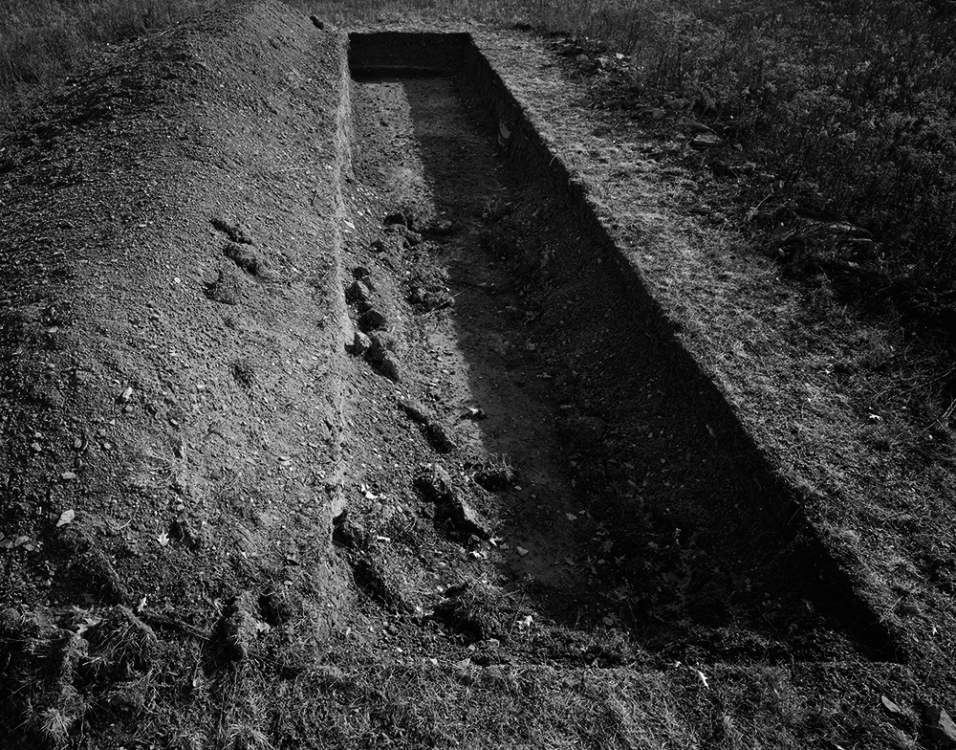
Act I, Year Three, November
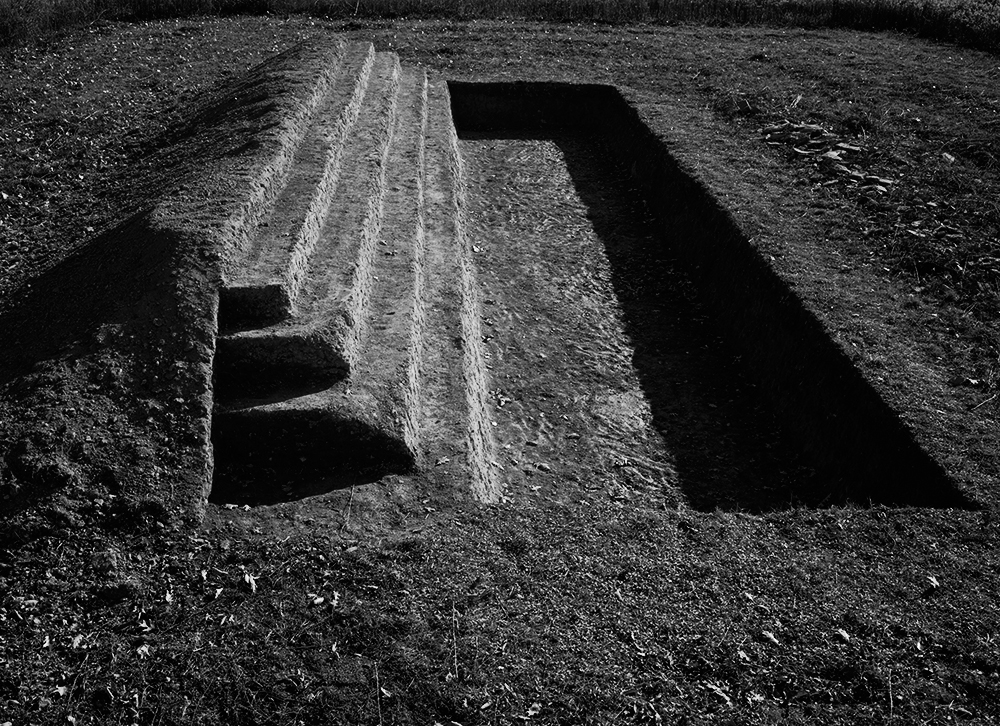
Act I, Year 4, October
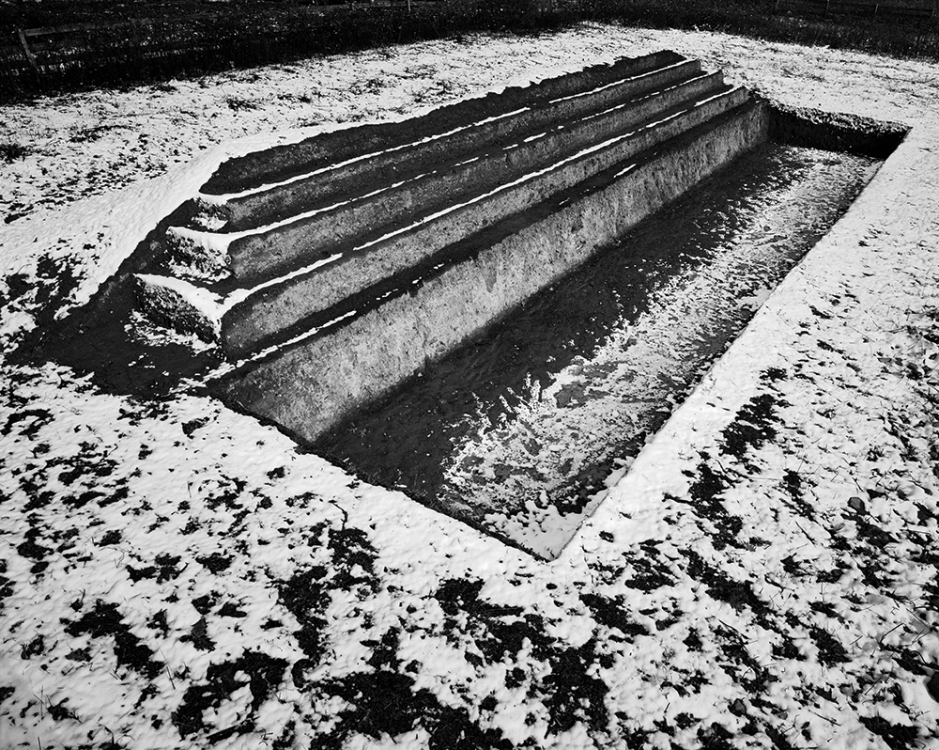
Act I, Year 4, November #2
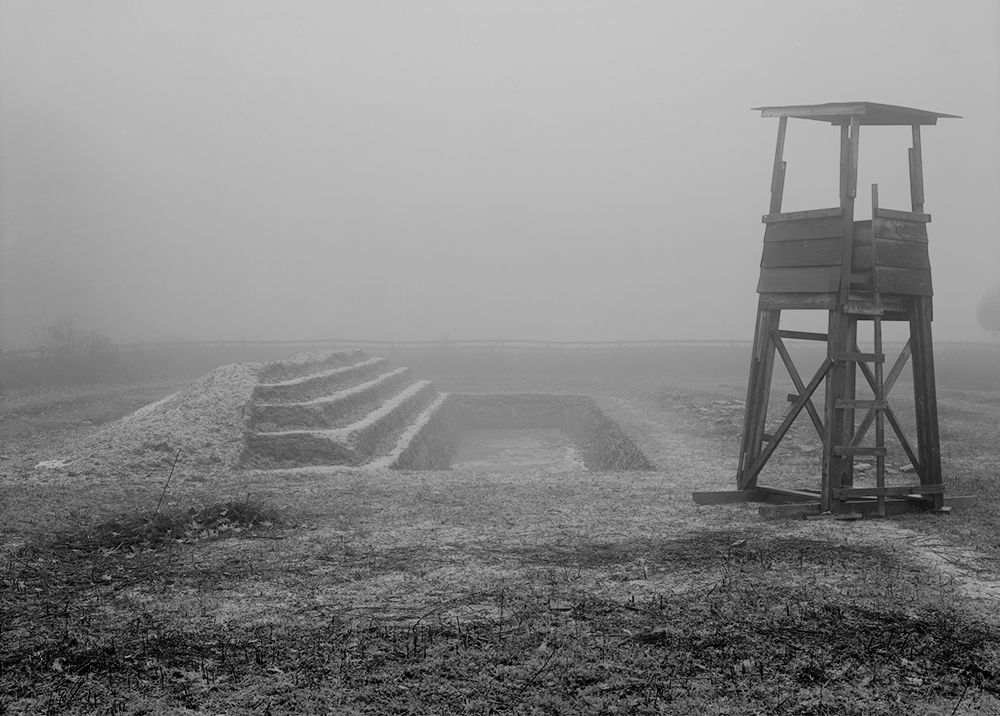
Act I, Year Four, November #3
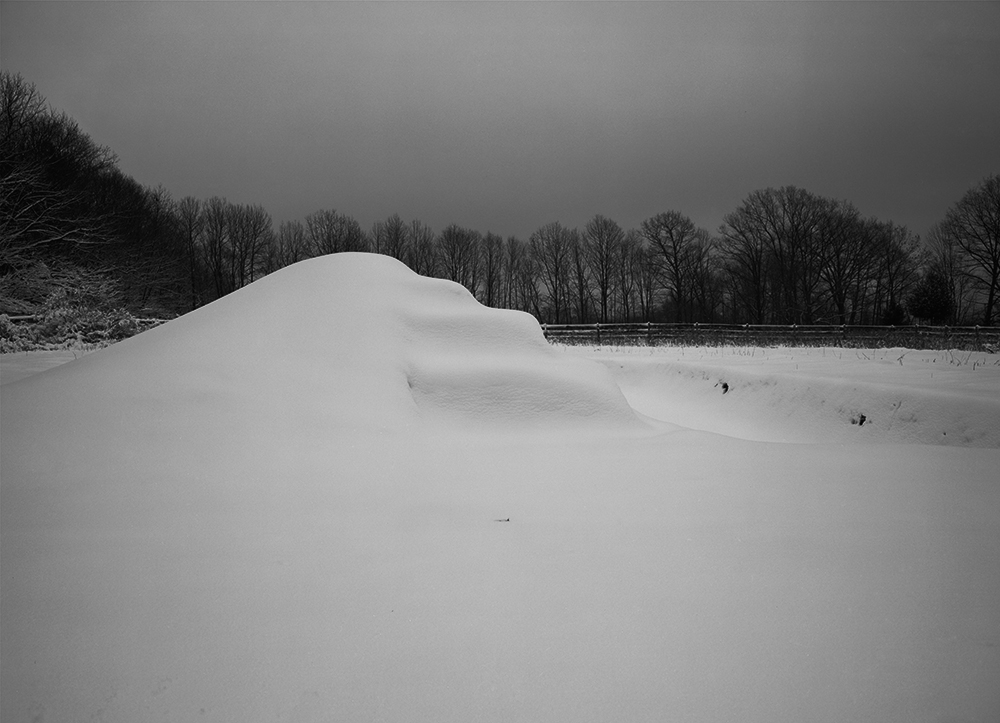
Act I, Year 4, December #2
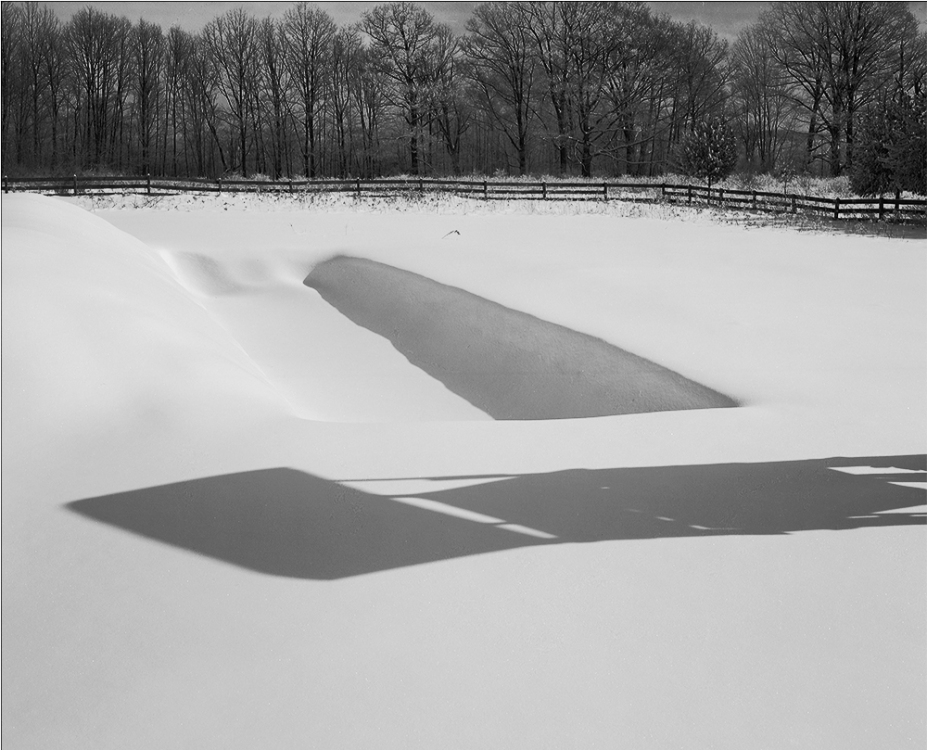
Act I, Year 5, February #1



